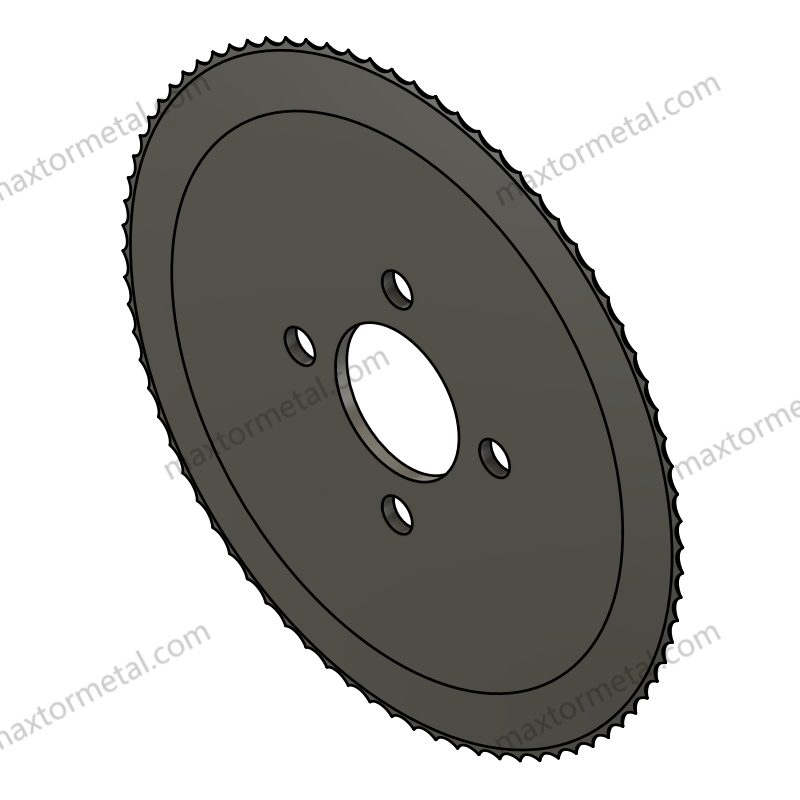
Hai una scelta importante da fare tra Coltelli Rotanti e taglio laser per materiali compositi. La scelta migliore dipende da quanto precisione, velocità e costi siano importanti per te. Molti settori utilizzano lame rotanti perché tagliano rapidamente. Tra questi, la difesa, il tessile, le pale eoliche e i componenti per automobili. Il taglio laser è popolare nei settori aerospaziale, automobilistico ed energetico. È ideale quando sono necessari tagli molto precisi o forme speciali. Valuta quanto devi produrre, quale materiale utilizzi e il tuo budget per decidere.
Punti chiave
- I coltelli rotanti tagliano rapidamente i materiali compositi e costano meno all'inizio. Sono adatti per realizzare molti componenti con materiali morbidi o flessibili. Il taglio laser offre bordi molto precisi, puliti e sigillati. È ottimo per forme dure, piccoli lotti e quando è richiesta un'elevata precisione. I coltelli rotanti necessitano di affilare o sostituire spesso le lame per mantenere i tagli perfetti. I laser non richiedono molta manutenzione, ma costano di più all'inizio. Il taglio laser produce fumi e necessita di un buon flusso d'aria. I coltelli rotanti non producono fumi e sono più sicuri per alcuni materiali. Dovresti scegliere coltelli rotanti o laser in base alla quantità che produci, al materiale che utilizzi, al tuo budget e alla precisione che desideri ottenere. I coltelli rotanti sono ideali per tagli facili e dritti e lavori veloci. I laser sono più adatti per forme dettagliate e modifiche rapide del design. Lame Personalizzate Le lame rotanti possono aiutare a tagliare materiali speciali o a svolgere lavori particolari. Esperti di aziende specializzate possono aiutarti a scegliere. Entrambe le macchine devono essere impostate correttamente, mantenute in buone condizioni e utilizzate da personale qualificato per eseguire tagli di qualità e funzionare al meglio.
Coltelli rotanti vs laser: considerazioni chiave per il taglio di materiali compositi
Coltelli rotanti nell'industria
I coltelli rotanti sono utilizzati in molte fabbriche. Sono utilizzati da molto tempo nei settori tessile, degli imballaggi e dei componenti per automobili. Sono ideali per tagliare materiali morbidi come tessuti, schiuma e pellicole. Possono tagliare rapidamente e durare a lungo. Questo aiuta a completare rapidamente i lavori più impegnativi.
Uno dei motivi principali per cui le aziende scelgono i coltelli rotanti è il costo iniziale più basso. Non servono molti soldi per iniziare. La manutenzione è facile, ma è necessario cambiare o affilare le lame spesso.
Le lame rotanti non producono fumi, quindi sono sicure per materiali come il PVC. Permettono anche di tagliare in diagonale, il che è utile in alcuni progetti. Tuttavia, le lame rotanti richiedono forza, quindi a volte il materiale può muoversi durante il taglio.
Vantaggi del taglio laser
Il taglio laser offre nuove possibilità per tagliare i materiali compositi. I laser possono eseguire tagli estremamente precisi, anche con una tolleranza di ±0,05 mm. Questo significa che si ottengono bordi lisci e puliti, senza bisogno di lavorazioni aggiuntive. I laser non toccano il materiale, che quindi non si piega né si muove.
Con il laser è possibile tagliare forme complesse e motivi dettagliati. I laser sono adatti sia per piccoli lavori che per grandi lavori. L'automazione consente di modificare rapidamente i progetti, risparmiando tempo. I laser sigillano anche i bordi dei tessuti sintetici, evitando che si sfilaccino.
Ecco una tabella per aiutarti a confrontare i fattori principali:
| Fattore | Vantaggi del taglio laser | Vantaggio dei coltelli rotanti |
|---|---|---|
| Precisione | Alto (±0,05 mm possibile) | Buono per una precisione moderata |
| Qualità del bordo | Bordi sigillati e lisci | Può effettuare tagli angolati |
| Velocità | Veloce per forme complesse | Più veloce per tagli dritti e semplici |
| Costo | Maggiore anticipo, minore manutenzione | Più basso nella parte anteriore, maggiore manutenzione della lama |
| Movimentazione dei materiali | Nessun contatto, nessuna deformazione | Può deformare materiali morbidi |
| Generazione di fumi | Necessita di estrazione | Nessun fumo |
| Flessibilità | Design facili da modificare | Ideale per lavori ripetuti |
Il taglio laser è la soluzione ideale quando sono necessari tagli molto precisi, forme complesse o modifiche rapide al design. Inoltre, consente di risparmiare materiale perché il taglio è sottile.
Scegliere il metodo giusto
Prima di scegliere un metodo di taglio, pensa al tuo progetto. Ecco alcuni suggerimenti per aiutarti a scegliere:
- I coltelli rotanti sono ottimo per tagliare molti materiali morbidi o flessibili veloce.
- I coltelli rotanti sono più economici all'inizio.
- Il taglio laser è più indicato per tagli molto precisi o forme complesse.
- I laser sono adatti per i compositi duri o quando sono necessari bordi sigillati.
- Pensa alla sicurezza. I coltelli rotanti non producono fumi, ma i laser necessitano di un buon flusso d'aria.
Suggerimento: a volte, i risultati migliori si ottengono utilizzando entrambi i metodi in momenti diversi.
Panoramica della tecnologia
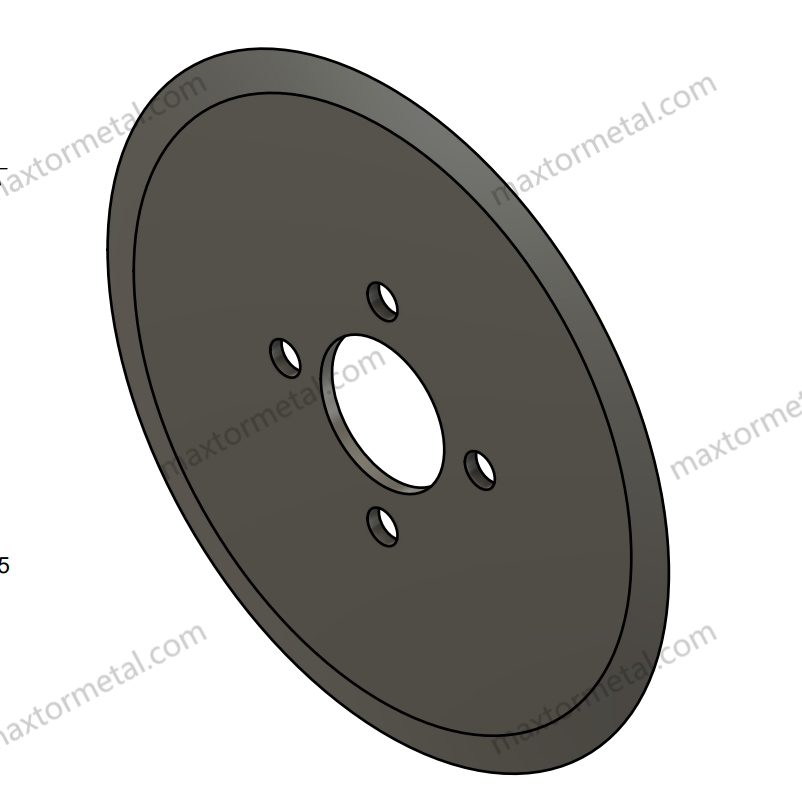
Principi dei coltelli rotanti
Progettazione della lama
Scoprirete che i coltelli rotanti hanno un design semplice ma potente. La parte principale è una lama circolare che ruota ad alta velocità. La lama lavora insieme a una barra fissa per tagliare i materiali. È possibile controllare la velocità, solitamente da Da 700 a 3000 giri/min, per adattarsi al tipo di composito che si desidera tagliare. La lama e la barra creano una forza di taglio che taglia il materiale in modo netto. Questo design consente di tagliare molti tipi di compositi, dai film morbidi agli strati più resistenti.
Se hai bisogno di una lama personalizzata per il tuo lavoro, puoi cercare un produttore di coltelli rotanti con una solida esperienza. Nanjing Metal è un nome affidabile nel settore. Con oltre 20 anni di esperienza, il loro team progetta e realizza lame industriali personalizzate per molteplici utilizzi. Puoi esplorare il loro Lame Personalizzate per trovare la soluzione più adatta al tuo progetto.
Applicazioni
Le lame rotanti possono essere utilizzate in molti settori. Queste lame sono adatte al taglio di carta, pellicole plastiche, tessuti non tessuti e gomma. Nelle fabbriche, le lame rotanti spesso funzionano in sincronia con i nastri di materiale in movimento. Servomotori e sensori Mantengono la lama e il materiale in movimento contemporaneamente. Questo mantiene i tagli uniformi e riduce sfilacciamenti o allungamenti. È possibile modificare rapidamente la ricetta di taglio, il che è utile quando è necessario cambiare lavoro senza fermare la macchina. I coltelli rotanti si adattano bene alle linee di produzione ad alta velocità e ad alto volume.
Processo di taglio laser
Tipi di laser
Vedrete diversi tipi di laser utilizzati per il taglio dei compositi. I più comuni sono i laser a CO₂ e i laser a fibra. I laser a CO₂ sono adatti per i compositi non metallici, come plastica e tessuti. I laser a fibra sono adatti per alcuni metalli e compositi speciali. Ogni tipo di laser utilizza un fascio di luce focalizzato per fondere o vaporizzare il materiale. Potete scegliere il laser più adatto in base allo spessore e al tipo di composito che dovete tagliare.
Qualità del bordo
Il taglio laser offre bordi estremamente lisci e sigillati. Il processo inizia con la preparazione del materiale e l'impostazione della potenza, della velocità e della messa a fuoco laser corrette. È consigliabile eseguire tagli di prova per verificarne la qualità. Il raggio laser si muove lungo il percorso impostato, guidato da un computer. Un flusso di gas attraversa il taglio per rimuovere il materiale fuso e raffreddare il bordo. Questo mantiene il taglio stretto e pulito. Dopo il taglio, potrebbe essere necessario pulire o rifinire il pezzo, ma il bordo di solito appare pulito e non si sfilaccia.
Precisione e qualità
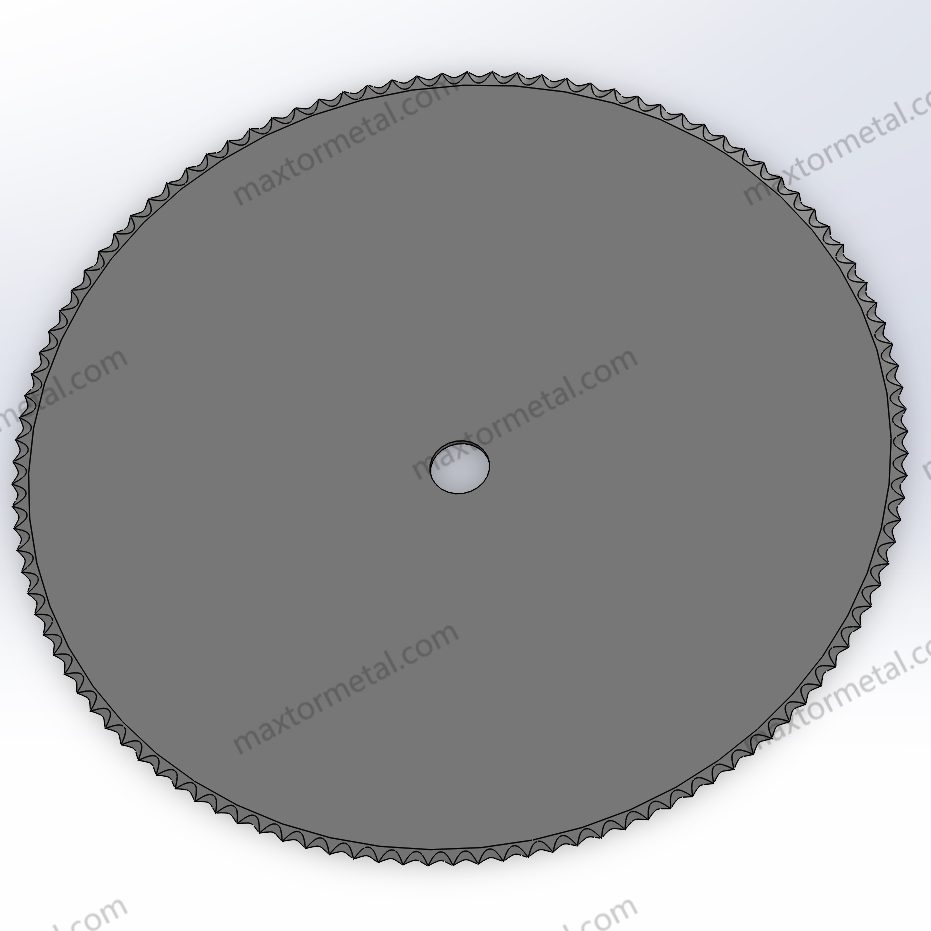
Tolleranze dei coltelli rotanti
Fattori meccanici
Molti fattori possono influenzare la qualità del taglio dei coltelli rotanti. Per ottenere buoni risultati, è necessario controllare i seguenti aspetti:
- La lama deve essere affilata. Se diventa smussata, gli errori di taglio possono aumentare del 25%Una lama smussata può far muovere il materiale o far apparire i bordi ruvidi. Può persino piegare il materiale in modi indesiderati.
- Dovresti affilare la lama spesso. Per la maggior parte dei lavori, affilala ogni 50.000 tagli. Per i lavori più impegnativi, affilala ogni 20.000 tagli. In questo modo i tuoi tagli saranno puliti e precisi.
- Alcune lame hanno rivestimenti speciali. Il nitruro di titanio può prolungare la durata di una lama 30%. Questo aiuta la lama a rimanere affilata anche durante i lavori più impegnativi.
- La macchina deve essere allineata correttamente. Anche un piccolo errore di 0,1 mm può rendere i tagli irregolari e causare sprechi di materiale.
- Gli strumenti laser possono aiutarti ad allineare meglio la macchina. Questo ti aiuta a tagliare più dritto e ad avere meno problemi con i bordi.
- La lama deve essere inserita nella macchina nel modo corretto. Se è troppo stretta o troppo lenta, la lama può oscillare e perdere precisione.
- Gli ammortizzatori e i morsetti idraulici aiutano a mantenere la lama stabile. Questo è importante quando si taglia velocemente.
- Mantenere la macchina pulita e oliataL'olio aiuta le parti a muoversi agevolmente ed evita che si sfreghino troppo.
- Formare bene i lavoratori. Una buona formazione aiuta a prevenire gli errori e a mantenere un taglio preciso.
Casi d'uso tipici
Le fabbriche utilizzano lame rotanti per tagliare e rifinire rapidamente i materiali compositi. Queste lame sono ideali quando è necessaria una buona velocità e una discreta precisione. La maggior parte delle macchine a lama rotante può tagliare con tolleranze da ±0,1 mm a ±0,5 mm. Questo dipende dal materiale e dalla cura con cui si utilizza la macchina.
Precisione del taglio laser
Tolleranze
Il taglio laser è più preciso rispetto alla maggior parte degli altri metodi. Il laser non tocca il materiale. Non devi preoccuparti di lame smussate o di spostamento del materiale. La tabella seguente mostra le tolleranze ottenibili per i diversi materiali:
| Tipo di materiale | Intervallo di tolleranza tipico del taglio laser |
|---|---|
| Metals (Acciaio, Alluminio, Acciaio inossidabile) | da ±0,005" a ±0,010" |
| Plastica (acrilico, policarbonato) | da ±0,007" a ±0,015" |
| Legno e compositi | da ±0,010" a ±0,020" |
Per i compositi, di solito puoi ottenere tolleranze da ±0,010" a ±0,020"Questa è una soluzione ideale quando hai bisogno che i pezzi si incastrino bene tra loro o che abbiano forme complesse.
Finitura del bordo
Il taglio laser crea bordi lisci e sigillati. I bordi non si sfilacciano né si separano, il che è importante per i materiali compositi. La qualità del bordo dipende dalla potenza del laser, dalla velocità e dal materiale. A volte, si potrebbe notare una piccola area modificata dal calore. Ma questa è minima se la macchina è impostata correttamente.
Nota: se si utilizzano materiali compositi sensibili al calore, si potrebbe provare il taglio con lama vibrante. Questa tecnica utilizza una lama che si muove avanti e indietro per tagliare. Non fonde né brucia il materiale. Questo mantiene il materiale resistente e previene i danni causati dal calore. Le lame vibranti possono anche tagliare più strati contemporaneamente e creare bordi lisci.
Velocità e produttività
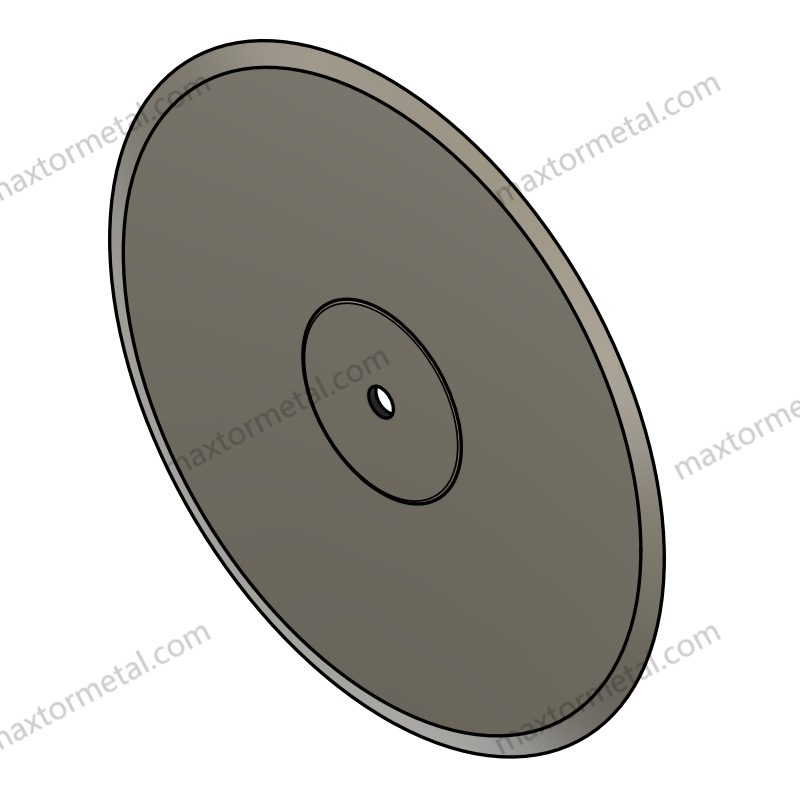
Efficienza dei coltelli rotanti
Funzionamento continuo
I coltelli rotanti tagliano velocemente e durano a lungo. Molte fabbriche li utilizzano perché non necessitano di fermate frequenti. Ad esempio, il sistema di taglio a tavolo statico S125 di Eastman Machine Company può tagliare fibra di carbonio e materiali ibridi a velocità fino a 60 pollici al secondo (152,4 cm/s)Questa elevata velocità aiuta a completare rapidamente i lavori più impegnativi. Le lame rotanti lavorano in linee che si muovono ininterrottamente, così non è necessario fermarsi tra un taglio e l'altro. Questo le rende ideali per la produzione di grandi quantità di pezzi.
Ecco una tabella che mostra la velocità con cui diversi utensili da taglio lavorano con i compositi:
| Utensile da taglio / Impostazione | Velocità di taglio / velocità di avanzamento | Dettagli aggiuntivi / Osservazioni |
|---|---|---|
| Lama dentata in metallo duro | 500 mm/s | Molto più veloce della sega diamantata; sono stati notati alcuni problemi di rigidità |
| Fresa Onsrud (1/2″) 67-033 | Usura dell'utensile in ~5 giorni | Possibile squilibrio velocità/avanzamento |
| Mulino a macine Onsrud (67-010) | 150 ipm (63,5 mm/s) | Avanzamento considerato basso; macchina a piena velocità rapida |
| Lama per sega a grana diamantata da 8″ | ~55 mm/s | La lama si carica oltre questa velocità; spingendo via una parte |
| Lama di sega simile (segnalata da un altro negozio) | 1000-2000 mm/s (dichiarato) | Molto più veloce del normale, ma non confermato in questa configurazione |
| Mandrino robotizzato con utensili Colombo | 24.000 giri/min | Elevata velocità del mandrino per la rifinitura di parti in fibra di vetro |
Come puoi vedere, i coltelli rotanti sono tra gli strumenti più rapidi per tagliare i materiali compositi.
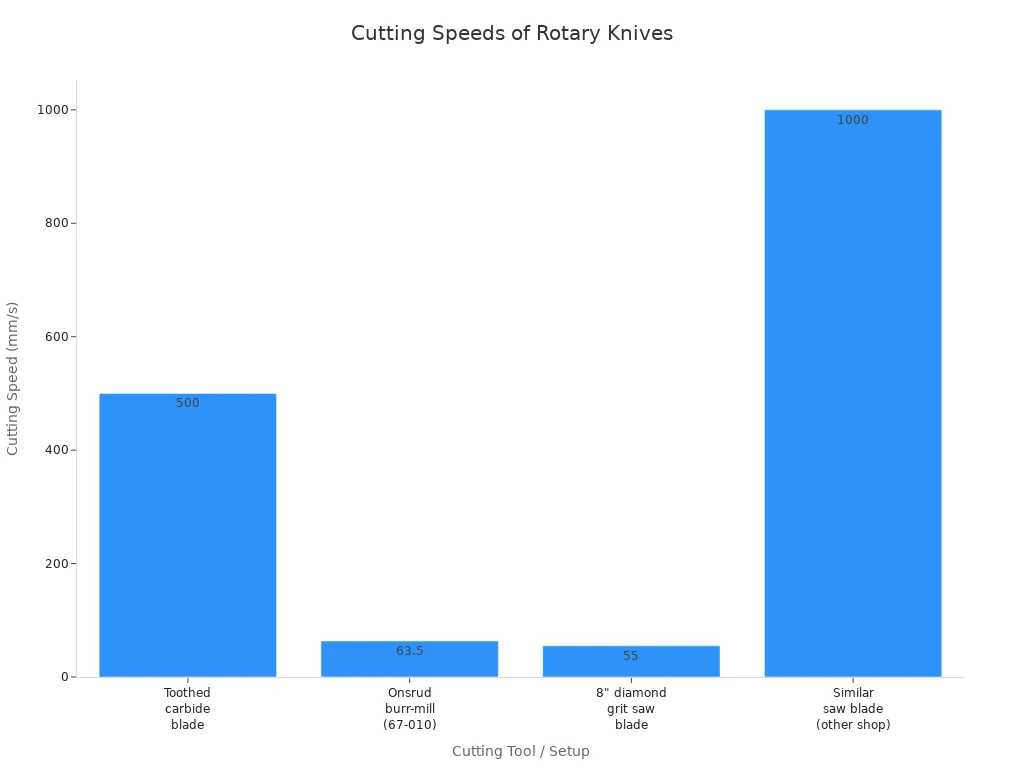
Movimentazione dei materiali
Le lame rotanti possono tagliare molti tipi di materiali, dai film morbidi ai compositi resistenti. È possibile inserire rotoli o fogli nella macchina. Il sistema mantiene il materiale in movimento, evitando inceppamenti o rallentamenti. È possibile modificare l'impostazione per materiali spessi o sottili. Ciò significa che è possibile cambiare lavoro rapidamente e con tempi di attesa ridotti.
Laser Cutting Speed
Prototyping
Laser cutting is good when you need to make a few samples or small batches. You can change your design fast and do not need to switch tools. The speed depends on the laser type and the material. For example, pulsed Nd:YAG or CO₂ lasers can cut thick composites at 0.1 m/min, while single mode fiber lasers can go up to 7.5 m/min. You can see the different speeds in the chart below.
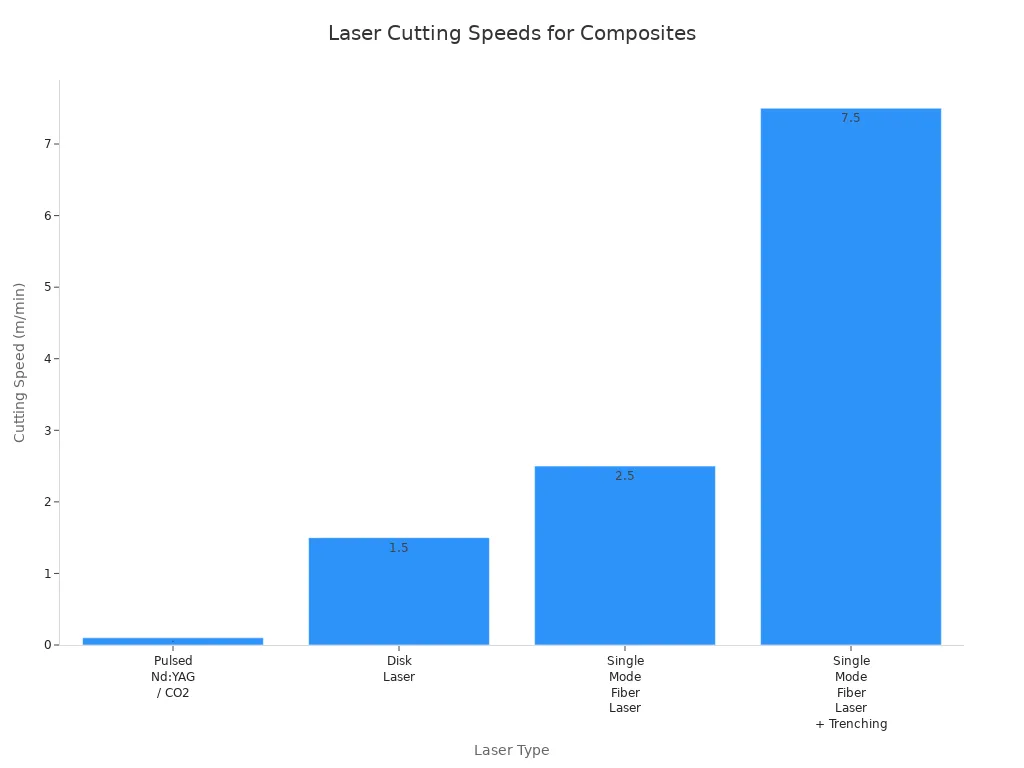
Laser cutting and rotary knives have about the same speed for many composites. Vibrating knife systems can be twice as fast, but for most jobs, rotary knives and lasers are close in speed.
Complex Designs
Laser cutting is great for tricky shapes and detailed patterns. Lasers follow computer paths, so you can cut curves, holes, and special shapes with high accuracy. If you set the laser power and speed right, you keep the heat-affected zone small. This helps keep your composite parts strong. For example, tests show you can cut carbon fiber reinforced plastics at speeds up to 2700 mm/min with very little heat damage. Special holders keep the material still, so you get the same good results every time. You can use laser cutting for car panels, battery covers, and other parts that need exact shapes.
Costi e manutenzione
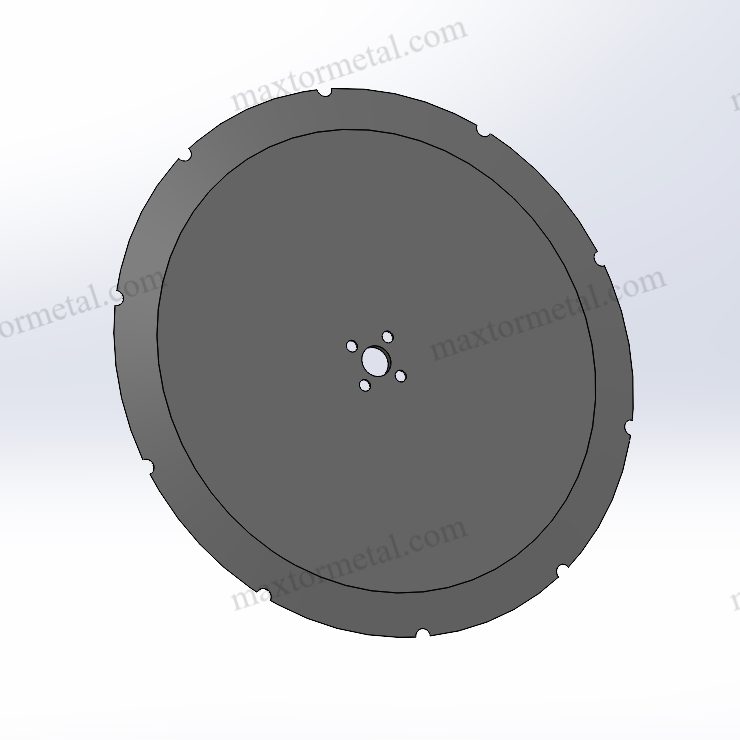
When you pick a way to cut composites, you must think about how much money you spend at first and later. Rotary knives and laser cutting have different costs. Let’s look at both so you can choose what works best for you.
Rotary Knives Costs
Equipment Investment
Rotary knives do not cost as much to buy as laser machines. You need to pay for the slitting machine, rotary knife parts, and some safety gear. Most factories can start using rotary knives without spending too much. This is good if your business is small or medium, or if you want to save money.
Manutenzione della lama
You have to take care of rotary knives to keep them working. The blades get dull after a while, especially if you cut hard stuff or use them a lot. You will need to sharpen or change blades often. Sometimes, you do this every few days or weeks, depending on what you cut. You also need to check if everything lines up and oil the moving parts. If you skip this, your machine might stop working or make bad cuts.
It is important to have sharp blades ready when you need them. The cost for workers to do this is not high, but you should plan for it.
Tip: If you take care of your blades, your machine will work better and your cuts will look nice.
Laser Cutting Costs
Capital Expense
Laser cutting machines cost a lot more at the start. For cutting composites, you might pay $100,000 to $500,000 for a new laser. Most cost about $300,000. This price covers the laser, the moving parts, cooling, and safety covers. These machines lose value over time, but fiber lasers keep their value better because they do not need as much fixing. You might need to borrow money or rent if you want a laser cutter.
Energy and Upkeep
Laser cutters use a lot of power, especially strong ones. Fiber lasers use up to half as much power as CO2 lasers, so your bills are lower. You also need to pay for things like new lenses, filters, and cleaning the laser parts. Lasers do not have blades, so you do not need to worry about changing them. This means you spend less time fixing the machine.
You need trained workers to keep your laser running well. You do not need to fix lasers as often as rotary knives, but when you do, it can cost more and take longer. Lasers also need good air flow to get rid of fumes.
Here is a table to help you compare energy use and upkeep:
| Aspetto | Fiber Laser Cutting System | CO2 Laser Cutting System |
|---|---|---|
| Consumo energetico | Up to 50% less electricity than CO2 lasers | Higher electricity consumption |
| Electro-Optical Efficiency | 30-50% | 10-15% |
| Requisiti di manutenzione | Lower due to simpler design and fewer consumables | Higher due to complex cooling and mirror replacement |
| Operating Costs | Inferiore | Più alto |
Note: Laser cutters cost more at first but need less fixing and use less power over time. Rotary knives are cheaper to buy but need more care because of blade wear.
Which Should You Choose?
If you want to cut a lot and save money, rotary knives are a good pick. They are great for big jobs where you do not need super exact cuts. If you need very exact cuts, special shapes, or want to change designs, laser cutting might be worth the higher price.
Compatibilità dei materiali
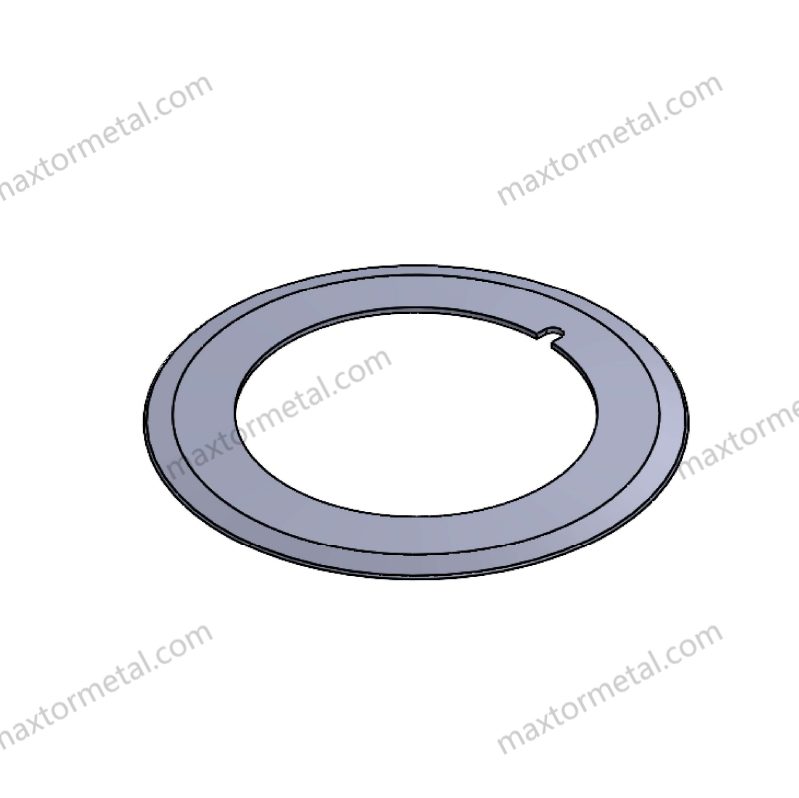
Rotary Knives Materials
Common Composites
Rotary knives can cut many kinds of composite materials. These materials mix things like ceramics, metals, and polymers. They are strong but not heavy. This is important for cars and airplanes. Here are some composites you might see cut with rotary knives:
- Carbon fiber composites
- High-strength polymers
- Laminated films
- Tessuti non tessuti
- fogli di gomma
Rotary knives work well because they cut soft and tough layers. For hard jobs, use blades made from tool steels or high-chromium steels. These blades last longer and stay sharp.
Limitazioni
There are some limits when using rotary knives. Very thick or super hard composites can wear out the blade fast. Some layered composites might move or stretch if you do not keep them tight. Rotary knives are not the best for tricky shapes or tiny details. For those jobs, you may need a different cutting method.
Laser Cutting Materials
Suitable Types
Laser cutting lets you cut more types of composites. Lasers can cut:
- Carbon fiber: This material is strong and light. Lasers cut it very well, but you must watch the heat so it does not come apart.
- Fiberglass: Lasers are good for cutting and marking fiberglass. You need good air flow because cutting fiberglass makes dangerous fumes.
- Plastic composites: Things like polypropylene, polyethylene, and ABS cut well with lasers if you set the machine right.
Here is a table that shows which lasers work best for each composite:
| Composite Type Composition | Recommended Laser Type | Wavelength | Laser Power Range | Additional Considerations |
|---|---|---|---|---|
| Mostly Organic (e.g., carbon fiber epoxy) | CO2 Laser | 10.6 micron | 25–150 Watts | Use exhaust and air assist to manage fumes and particles |
| Mostly Metallic | Laser a fibra | 1.06 micron | 40–50 Watts | Take safety steps for metal composites |
| Plastic Composites (PP, PE, ABS) | CO2 Laser | 10.6 micron | Variable | Adjust laser settings for clean cuts |
Tip: Always check what safety steps you need for your material. Some composites make dust or fumes that need special air systems.
Thickness and Reflectivity
How thick and shiny the material is matters for laser cutting. Thick composites need more power and slower speed. Sometimes you must cut more than once to get through. Shiny materials, like ones with aluminum or brass, can bounce the laser beam. This makes cutting harder and you need a fiber laser and careful power control.
Here is a table to help you see how these things matter:
| Fattore | Effect on Laser Cutting Suitability for Composites |
|---|---|
| Spessore del materiale | Thicker materials need higher power and slower speed. You may need multiple passes for layered composites. |
| Reflectivity | Reflective surfaces need special lasers and settings to avoid beam bounce and ensure a clean cut. |
| Composite Details | Layered and variable composites need advanced controls and assist gases for the best results. |
| Laser Settings | You must adjust power, speed, and focus for each material. Use assist gases like oxygen or nitrogen to improve cut quality. |
If you want to cut many kinds of composites with high accuracy, laser cutting gives you lots of options. You can change the machine for each job and cut both thin and thick materials.
Limitazioni e sfide

Rotary Knives Issues
Alignment and Tension
When you use rotary knives, you must keep the blade straight and the material tight. If the blade moves, your cuts will not be straight. Loose material can stretch or move, making rough edges. Blades can wear out fast or even break if tension is wrong. Here are some problems you might see:
- Abrasive composite blades can wear out quickly and not cut as deep.
- Side pressure on the blade can crack or break it.
- Gasoline or oil can make the blade’s resin weak and unsafe.
- Carbide blades can lose tips or break if not checked often.
- Safety rules say to test fiber blades at full speed away from people.
| Operational Issue | Cause/Mechanism | Impact on Operation | Mitigation Approach |
|---|---|---|---|
| Bluntness and breakage | Impacts and chiseling during cutting | Shorter blade life, poor cut quality | Use coatings, improve blade design |
| Fatigue failure at root | Repeated stress and weak spots | Blade damage, sudden failure | Add reinforcement, use vibration control |
| Wear resistance problems | Tough materials and friction | Frequent blade changes, more downtime | Use metal-ceramic coatings |
| Shock loads and high friction | Unbalanced forces during operation | More stress, possible deformation | Optimize structure, use vibration theory |
Maintenance Impact
If you do not take care of rotary knives, problems show up fast. Dull blades and loose parts make cuts less accurate. You might waste more material or break the machine. If you do not replace worn parts, the machine can stop working suddenly. This means lost time and less production. Dust, heat, and humidity can also hurt your machine if not controlled. A good maintenance plan helps you avoid these problems and keeps things running well.
Laser Cutting Issues
Ventilation
Laser cutting makes fumes and tiny bits when you cut composites. You need strong airflow to keep the air clean and safe. Without good ventilation, fumes can hurt your health and the machine. Some materials, like fiberglass, make dangerous dust that needs special filters. You must set up your workspace with the right exhaust systems and keep them working well.
You may also have other problems:
- Fiber peeling and burrs can make cuts less accurate.
- Cutting thick composites needs more laser power, which costs more and is harder.
- Waste from laser cutting can be hard to handle and may need special disposal.
Operator Skills
Laser cutting machines need skilled workers. You must know how to set up the machine, adjust the laser, and keep things safe. Training teaches you about the machine, CAD software, and how materials react to lasers. You also learn safety steps, like using gear and what to do in emergencies. Operators must check the machine, fix problems, and keep the area clean. Training helps you stay up to date with new technology and safety rules.
Here is what you need to know as a laser operator:
- Learn how the machine works and use CAD software.
- Get safety training for lasers and emergency steps.
- Practice setting up, adjusting, and caring for the machine.
- Fix problems like misalignment or software errors.
- Keep learning with new classes and updates.
Guida alle decisioni
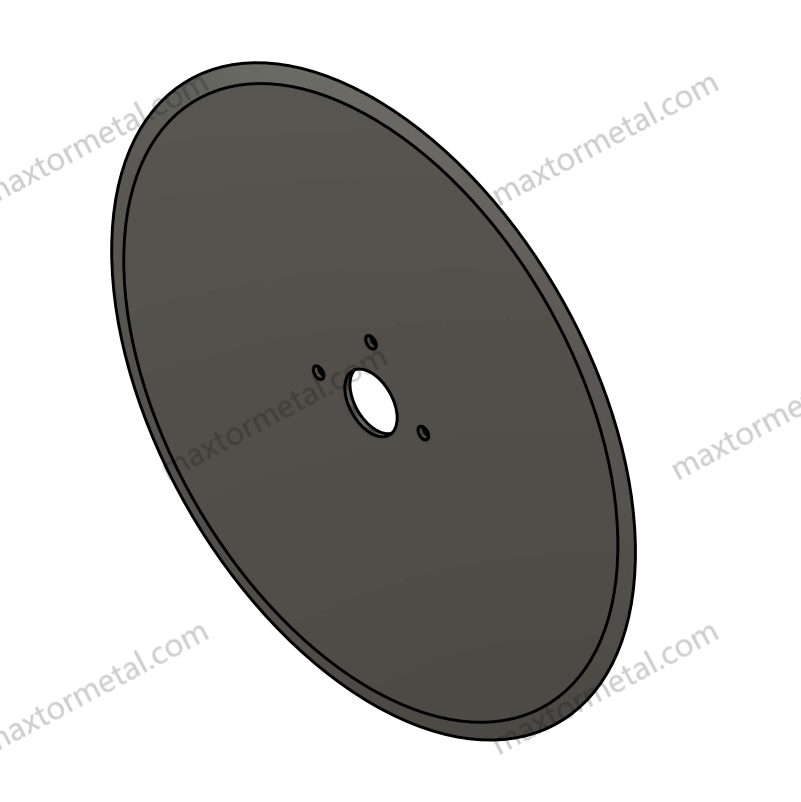
Scenari applicativi
Produzione ad alto volume
You should choose your cutting method based on how much you need to produce. If you run a factory that makes thousands of parts every day, rotary knives work well. These machines cut fast and keep going for long hours. You can use them for materials like paper, film, and nonwoven fabrics. Many factories use rotary knives because they help finish big jobs quickly. You do not need to stop often to change tools. This means you save time and keep your production line moving.
Prototyping and Complex Cuts
If you need to make samples or test new designs, laser cutting gives you more flexibility. You can change your design on a computer and start cutting right away. Lasers also help when you need to cut special shapes or detailed patterns. You do not need to buy new blades for every shape. Laser cutting works well for small batches, custom parts, or when you want to try new ideas. You get clean edges and high precision, which is important for prototypes.
Tip: For lama personalizzata needs, you can work with a rotary knives manufacturer that has a strong reputation. Nanjing Metal is a trusted name in the industry. With 20 years of experience, their skilled team designs and produces custom blades for many industries. Many customers choose them for reliable solutions.
Budget Considerations
Upfront vs Ongoing Costs
You need to think about both the money you spend at the start and the money you spend over time. Rotary knives cost less to buy. You can start using them without a big investment. However, you must pay for blade sharpening and replacement as you keep using the machine. Laser cutting machines cost much more at the start. You pay for the laser, safety covers, and special parts. Over time, you spend less on parts because there are no blades to replace, but you pay more for energy and skilled workers.
| Cost Type | Coltelli Rotanti | Taglio laser |
|---|---|---|
| Costo iniziale | Basso | Alto |
| Manutenzione | Moderate (blades) | Low (no blades) |
| Energy Use | Basso | Alto |
| Flessibilità | Inferiore | Più alto |
Tempo di inattività
Downtime can affect your business. Rotary knives may need to stop for blade changes or maintenance. If you keep extra blades ready and follow a good maintenance plan, you can reduce these stops. Laser cutters do not need blade changes, so you have fewer stops for tool changes. However, when a laser needs repair, it may take longer and cost more to fix. You should train your team to handle small problems quickly.
Picking between rotary knives and laser cutting depends on what you need. You should think about a few things:
- Production volume: Rotary knives are best for making lots of parts. Laser cutting is good for small jobs or testing new ideas.
- Material type: Rotary knives cut soft or bendy composites well. Lasers are great for thin or detailed materials.
- Bilancio: Rotary knives are cheaper to buy at first. Lasers cost more but do not need as much fixing later.
| Fattore | Coltelli Rotanti | Taglio laser |
|---|---|---|
| Velocità | Fast for big batches | Quick for tricky shapes |
| Precisione | Okay | Molto alto |
| Flessibilità | Not as flexible | More flexible |
Domande frequenti
What are the main benefits of rotary knives for composite cutting?
Rotary knives cut fast and do not cost much to use. They are good for big jobs and work well with things like films or fabrics. You can change or fix the blades easily.
When should you choose laser cutting over rotary knives?
Pick laser cutting if you need very exact cuts or special shapes. Lasers are ideal for samples, custom parts, or when you need sealed edges on synthetic materials.
Can rotary knives handle all types of composite materials?
Rotary knives can cut most regular composites like paper, plastic film, and nonwoven fabric. If the material is very hard or thick, you might need another cutting way.
How often do you need to replace or sharpen rotary knife blades?
Check if the blade is sharp often. For most jobs, sharpen or change blades every few days or weeks. How long a blade lasts depends on what you cut and how much you cut.
What is the typical edge quality difference between laser and rotary cutting?
Laser cutting makes edges smooth and sealed with almost no fraying. Rotary knives can make neat cuts, but soft materials might have a little roughness on the edge.
Vedi anche
Aumenta la tua efficienza con la corretta installazione e configurazione dei coltelli rotanti
Coltelli Circolari Industriali: Confronto di Prestazioni e Materiali
Cosa sono i coltelli Crush Cut e come funzionano nell'industria


